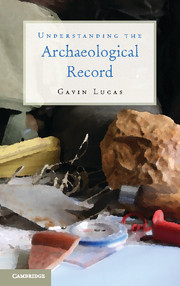7 - A ‘New’ Social Archaeology?
Published online by Cambridge University Press: 05 June 2012
Summary
In the previous two chapters, I have attempted to try to reforge some connections between the increasingly fragmented discourses that have developed around the concept of the archaeological record. In Chapter 5, I addressed the relations between materiality and formation theory through the processes of materialization and dematerialization, exploring objects and events in terms of assemblages and exploring residues in terms of the irreversibility of assemblages. The very tension between the processes of materialization and dematerialization was ultimately interpreted in terms of memory through the processes of inscription and erasure and led to the idea of the archaeological record as an autoarchive. The archaeological intervention, as discussed in Chapter 6, can be considered simply a continuation of this process, albeit in a radical way; as such, the archaeological operation itself is a form of rematerialization, constructing new assemblages and objects by combining old parts (e.g. potsherds, stone tools, soils) and new products (e.g. photographs, drawings, texts). But it is not simply rematerialization, it is also, often at least, simultaneously a dematerialization. Consider an excavation trench; often excavation is called destruction (see Chapter 2), and certainly in a material sense, it acts to erase all material memories of the past within its confines. What is left, literally and figuratively, is a hole in the ground. For what the trench itself tells us about the archaeological act that occurred there is often very little; materially speaking, it can look no different from if we had dug it all out in one scoop with a machine, except perhaps tidier. So where is the real material trace of our excavation? It has been transferred into new forms – paper records, photographs, bags of finds, and samples. The archive of an excavation is thus simultaneously the archive of the excavation process and the site itself. From an operational or materializing perspective, the archaeological record is thus both given and created, simultaneously across all its elements.
- Type
- Chapter
- Information
- Understanding the Archaeological Record , pp. 258 - 266Publisher: Cambridge University PressPrint publication year: 2012



